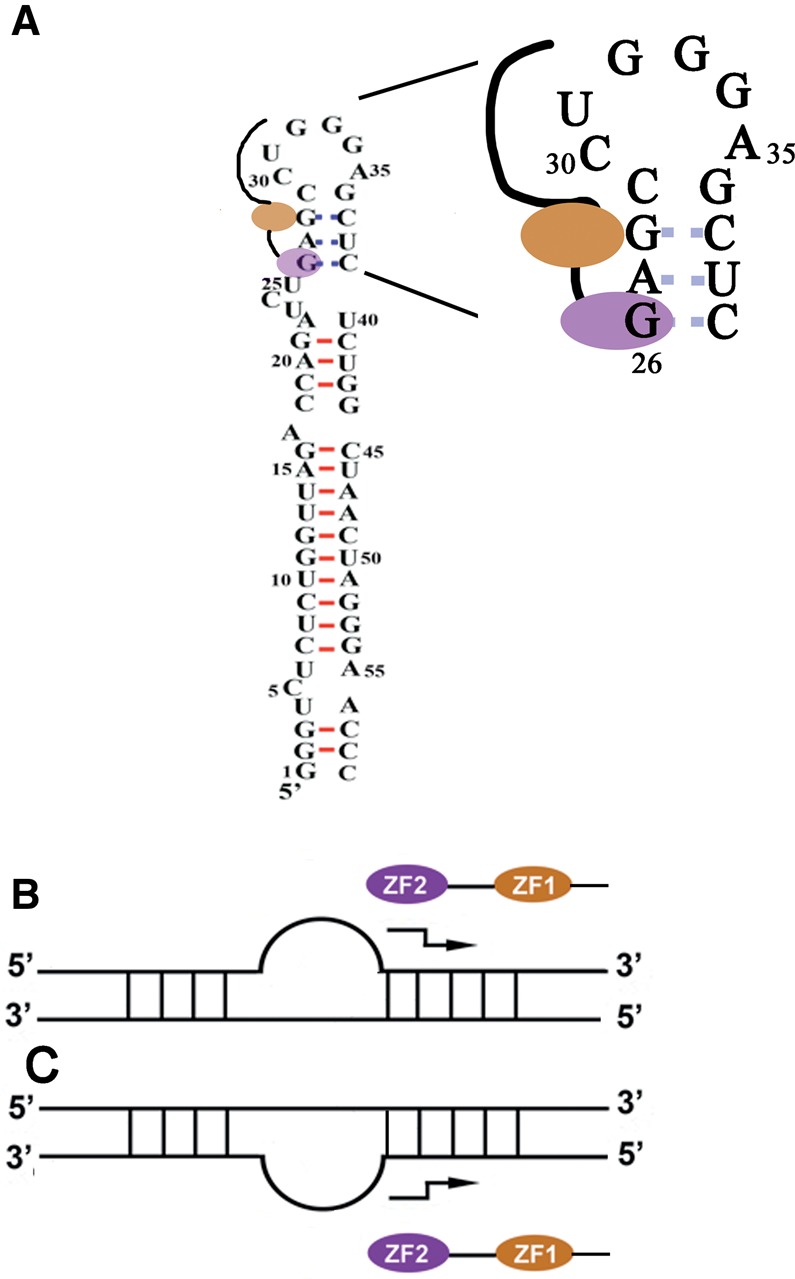FIGURE 5.

Hypothetical diagrams of RNA-DNA binding and destabilization by NC. (A) View of the TAR hairpin with a report of the observed imino protons (red) observed in the NC–TAR complex and those observable in the free RNA but not in the NC–RNA complex (dashed blue lines). NC is depicted with its two zinc fingers (ZF1: orange ellipse; ZF2: violet ellipse), the linker between the two zinc fingers and the N-terminal basic region are indicated by solid lines. We show also an expanded view of the destabilized region highlighting the hypothetical binding site at the G26 base for the ZF2 domain, whereas the ZF1 domain is more involved in the destabilization process. This image is consistent with both the data presented here and the work of McCauley et al. (2015). (B) Diagram of the destabilization of RNA secondary structure mediated by NC. The example shows a double-stranded RNA interrupted by a bulge. The binding polarity of the zinc fingers along the 5′-3′ nucleic acid chain is as observed in the three solved structures of RNA–NC complexes, with the N- to C-terminal polarity of the peptide chain antiparallel to the 5′-3′ direction of the nucleic acid chain (Bazzi et al. 2011). The NC is thought to bind preferentially to the strand containing single-stranded regions, and a staggered arrow indicates the preferentially destabilized region. This orientation of the destabilization process results from the ordering of the two domains of NC along the nucleic acid chain, with ZF1 responsible for stem destabilization (see “Discussion” section). (C) Diagram of the destabilization of DNA secondary structure mediated by NC. This example is similar to that shown in B, but with an opposite binding polarity deduced from that of known DNA–NC complexes (Bazzi et al. 2011). The position of the bulge is reversed relative to B as it is the case for the cTAR hairpin. The mechanisms involved in RNA and DNA destabilization converge to destabilize the same region of the two molecules, to the right of the bulge.
